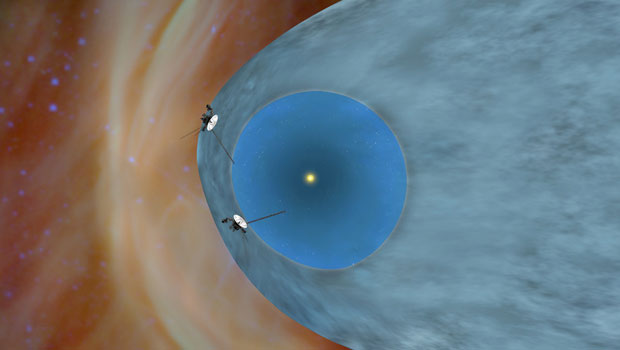
"As we move forward trying to figure out a context for our existence -- trying to understand how the sun, our solar system and our galaxy formed, and how these fit into the intergalactic patchwork that is our universe -- finding boundaries and understanding the physical reason for those boundaries is extremely important," said Carol Paty of GIT's School of Earth and Atmospheric Sciences.
The United States' Voyager 1 spacecraft is close to becoming the first human-made object to travel between the stars.
The spacecraft, which is now more than 11 billion miles from the sun, has entered the so-called "magnetic highway," showing scientists two of the three signs they believe will confirm it has entered interstellar space: the presence of charged particles from the sun shooting out into space; and cosmic rays from outside coming into the heliosphere, which can be thought of as the region of space dominated by the sun.

The third sign, an abrupt change in the direction of the magnetic field, would indicate the presence of the interstellar magnetic field. That has not yet been detected.
"We have speculated for many, many years on the nature of the interplanetary medium," William I. Newman, a professor of earth space sciences at the University of California at Los Angeles, told TechNewsWorld.
Crossing the boundary dividing the heliosphere from interstellar space is not like breaking through the skin of a bubble.
"It's not a barrier or sharp boundary -- it's just like leaving Earth's atmosphere," Newman explained. "There is a point where there is a balance between the magnetic forces associated with the sun and the interstellar medium."
This point, or boundary, is called the heliopause.